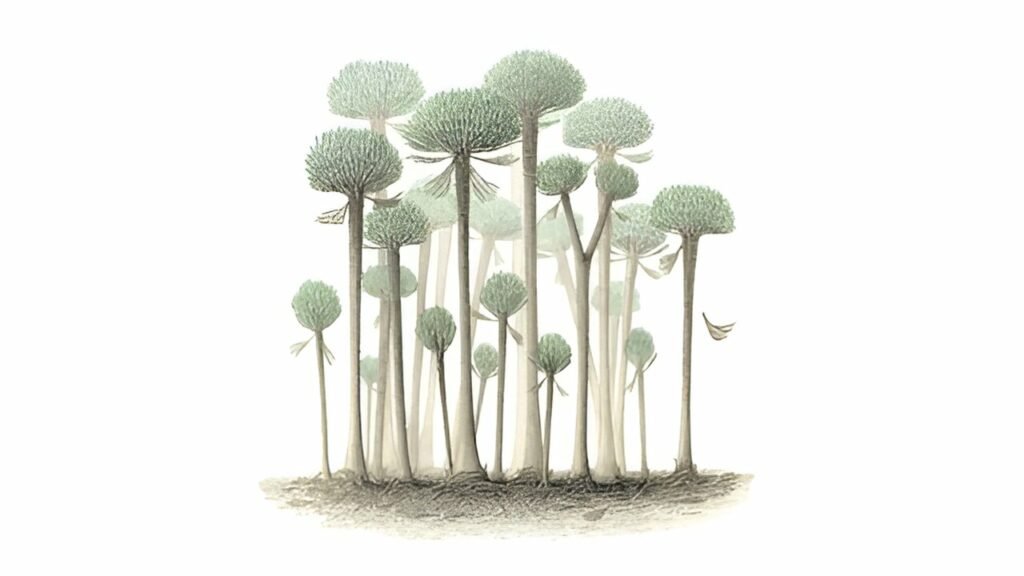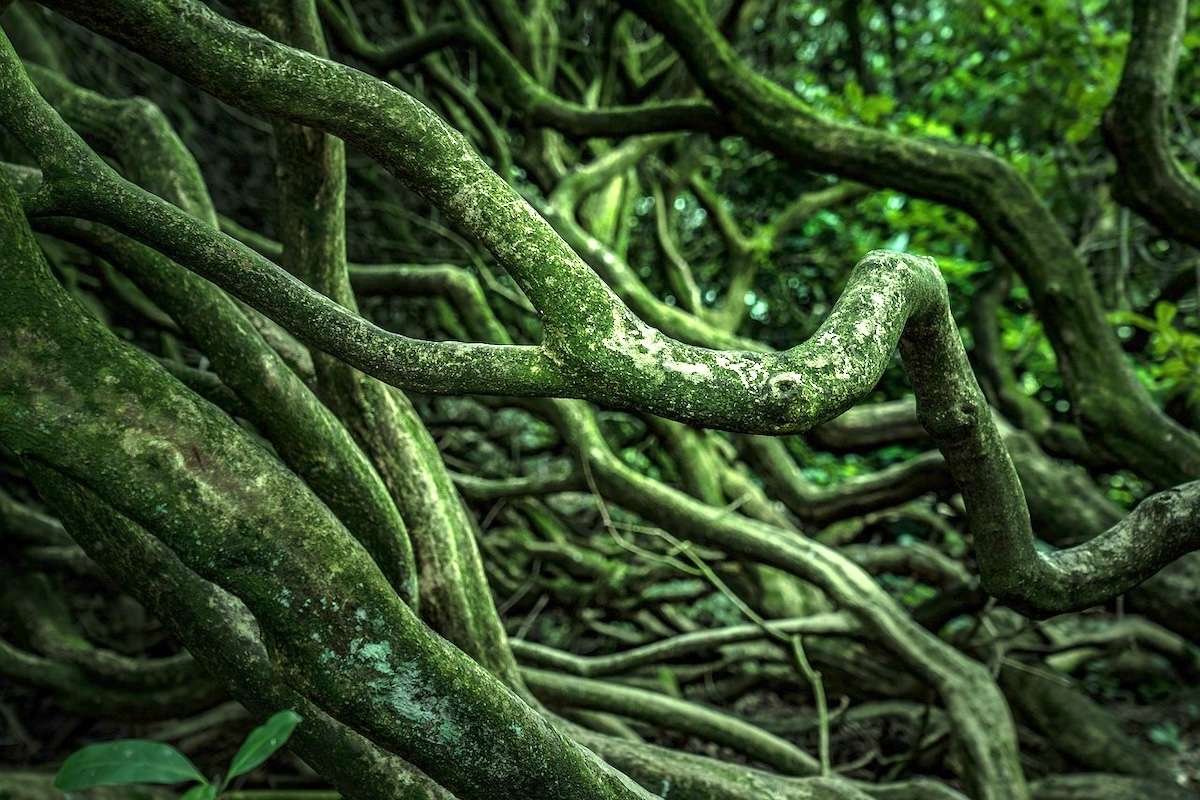Researchers have uncovered the earliest fossil evidence of ancient forests in the British record. The findings uncover a novel and unrecognized 390-million-year-old forest landscape that sheds new light on the early evolution of Earth’s land-based biosphere.
Published in the Journal of the Geological Society, the study focuses on the Middle Devonian (Eifelian) Hangman Sandstone Formation in Somerset and Devon, in Southwest England, and reveals an ancient era where a forest would have lived, dominated by cladoxylopsid trees.
“These Calamophyton trees are the oldest fossil trees ever found in Britain and represent an as yet missing part of our vegetational history,” explained Dr. Christopher Berry from Cardiff University’s School of Earth and Environmental Sciences who identified the fossils.
The researchers discovered well-preserved fossil material attributable to the cladoxylopsid tree Calamophyton. These trees, growing up to 2-4 meters tall, had narrow trunks with an expanded rounded base up to 20 cm in diameter and small roots. They formed densely spaced forests, shedding abundant plant debris. All that would have been perfect for the invertebrates that would have populated the ecosystem on the forest floor.


The trunks of these ancient trees were hollow in the center, and had rings of woody support strands around the outside. Leaves would have been fairly new on the evolutionary timeline, showing up about 20 million years prior to this forest; these trees had twig-like structures protruding from the branches.
“The record of fossil forests, where tree bases are preserved where they were living, so far dates back to those discovered in New York State, at Cairo and Gilboa at about 385 million years,” Berry said. “Although the area of rock exposure is limited and dangerous to access, our new discovery is the oldest clear example of such a geological phenomenon known to date and it speaks directly to the ecology of the oldest forests 390 million years ago.”
One of the more remarkable findings was at Culver Cliff in Somerset, where at least 17 cladoxylopsid tree trunks were found preserved on a single bedding surface. The trunks, measuring 5-10 cm in diameter and up to 1.4 meters in length, provide a glimpse into the spacing and density of these ancient forests. These were tight spaces, jam-packed with early life.
But these ancient forests were responsible for something else. They played a key role in shaping the earliest ‘modern’ riverbanks.
The study’s authors suggest that the cladoxylopsid trees colonized a sizable distributive fluvial system that essentially reshaped the landscape between land and a nearby waterway. All this flora was responsible for sediment accumulation, and their roots held the soils together enough to essentially create an early riverbank.
“The Devonian period fundamentally changed life on Earth. It also changed how water and land interacted with each other, since trees and other plants helped stabilize sediment through their root systems, but little is known about the very earliest forests,” said study author Professor Neil Davies of Cambridge University’s Department of Earth Sciences.
Evidence of plant-sediment interactions was found in the form of vegetation-induced sedimentary structures, rooting features, and accumulations of shed plant material. The researchers argue that these trees served as biogeomorphic agents, profoundly changing Earth’s landscapes and biosphere during the Devonian period. In very simple terms, the idea of a tree-lined riverbank, where the trees are responsible for the division of water and land, would have been a pretty new phenomenon during this period. Water flowed around, held at bay by elevated stone and rock. But now, trees, with their tightly knit roots and trunks, could also hold the soil together, keeping flood waters at bay.
“The evidence contained in these fossils preserves a key stage in Earth’s development,” Davies expressed. “When rivers started to operate in a fundamentally different way than they had before, becoming the great erosive force they are today.”
The findings from the Hangman Sandstone Formation provide compelling evidence that the Eifelian Stage marks the onset of significant tree-driven changes to physical environments. We get a peek at how the earliest land-based ecosystems formed, and another puzzle piece that answers how trees and forests would eventually come to rule this planet.
MJ Banias is a journalist who covers security and technology. You can find his work here. He co-hosts The Debrief Weekly Report. and you can email MJ at mj@thedebrief.org or follow him on Twitter @mjbanias.

